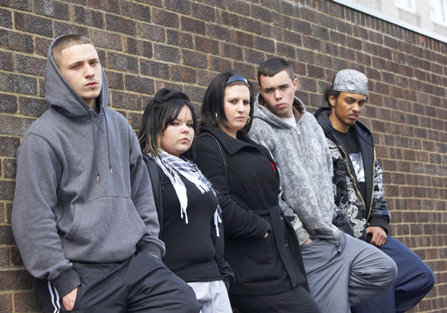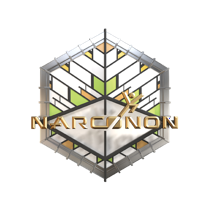Spotting Addiction: How to Tell if Your Loved One Has a Problem

Drug addiction has always been a devastating, increasingly lethal crisis. However, the scope of America’s addiction epidemic has broadened significantly since the turn of the century. The potency (and potential lethality) of the drugs used have increased dramatically.
With over 93,000 reported overdose deaths occurring in 2020, being able to spot drug addiction has never been more important than it is now. Families need to know the signs and symptoms of addiction so they can take action and help their loved ones get treatment. Even if someone is trying to hide the fact that they are addicted to drugs or alcohol, their loved ones need to know how to spot substance abuse.
When people know how to spot drug and alcohol abuse, they can take action and talk to their loved one. They can help convince their loved one to seek treatment. They can have a positive impact on their loved one, and potentially even save their life.
Signs of Drug and Alcohol Addiction
The better prepared and knowledgeable the family members of addicts are, the better equipped they are to help their loved one get off drugs. The first step to help a loved one begins with the ability to accurately spot addiction. Following are several signs that someone may be compulsively misusing drugs and alcohol:
- Neglecting important personal, familial, and professional responsibilities. Drug and alcohol addiction is characterized by a loss of control over one’s use of a mind-altering substance. When this occurs, the individual will begin neglecting important personal and professional responsibilities.
- Isolating from family members, loved ones, and friends. Isolation is an addict’s best strategy for hiding the fact that they are misusing drugs and alcohol. Spending time alone, not wanting to interact or socialize, and finding reasons to miss family engagements and activities could be indicators of substance abuse.
- New financial difficulties/always needing money. Money troubles are often present for those who struggle with addiction. A sudden need for money or a frequent request to borrow money, or an out-of-nowhere tendency to sell prized possessions and family heirlooms, could all be indicators of an expensive substance abuse habit.
- Lying to or stealing from family and friends. People who are addicted to drugs and alcohol are rarely honest about it. Even if it’s known within the family that the loved one is addicted, the individual is rarely upfront about what they are addicted to, how much they use and how often. Theft is also an indication of substance abuse, as addicts will often have to steal money to fund their habit.

- Changes in eating habits, weight, appearance or sleep regimen. Significant life changes like altering one’s sleep schedule, eating less often, losing weight, dropping out personal hygiene and generally not taking care of oneself can all be indicators of drug abuse or alcohol addiction.
- Frequent mood shifts. Drugs and alcohol are, by definition, mind-altering substances. Given that such substances alter one’s mental state, one should consider the possibility of drugs and alcohol as being the culprit behind frequent, unpredictable, potentially aggressive mood shifts in their loved one. Paranoia, fearfulness, irritability, anger, delusion, and anxiety can all be indicators of substance abuse.
- Physical cravings. If a loved one has already confessed to experimenting with mind-altering substances but insists they are in control, evidence of their physical cravings for such a substance would be a strong indicator that they are addicted to it.
- Trouble with the law, incarceration or court hearings. Using drugs and excessive alcohol often lead to interactions with law enforcement. From drunk driving to being found in possession of drugs, much of the activities associated with drug and alcohol addiction will often land the addict in a jail cell. If a loved one gets arrested or gets into trouble with the law and won’t discuss why, it might be because of drug or alcohol addiction.
- Frequent hospital visits. Drug and alcohol abuse creates a high incidence of accidents and injuries, including falls, fractures, broken bones, car accidents, cuts, bruises, accidents in the workplace, and other mishaps. Unexplained accidents and injuries that “just don’t quite make sense” may result from drug or alcohol abuse.
- Promising to quit “tomorrow.” If it is known within the family that a loved one is using drugs, if they promise to quit soon, but they never do quit, this is a strong indicator of an addiction.
- Taking unnecessary risks. Most humans operate within their own zone of acceptable risk, with most day-to-day activities being very low-risk. People who misuse drugs and alcohol, on the other hand, tend to take much greater risks, especially while under the influence of substances. This could manifest in the form of driving a car while under the influence of drugs or alcohol, having unprotected sex, sharing needles with other addicts, operating heavy machinery while under the influence, getting in fights, etc.
- Unusual physical appearance. People who are addicted to drugs and alcohol may have bloodshot eyes or pupils that are larger or smaller than normal. They may have unusual smells on their breath, body, or clothing. Their physical coordination may be impaired; they might have a physical tremor or audible slur in their speech. They might have track marks on their arms, or they may have sores or bruises on their skin.

- Changes in the friend group. When someone starts using drugs and drinking alcohol, they’ll likely become a part of a social group that engages in those activities. If a loved one begins to move away from their usual friends and social groups and begins to hang out with a new crowd, this could indicate addiction.
- Drop-in attendance at work or school. Drug and alcohol addiction involves a mind-altering substance essentially taking over someone’s life, becoming priority number one for them. A result could be a drop in attendance at work or school, which could become so detrimental that the individual may drop out of school entirely or lose their job.
Treatment is the Answer
The first step in helping a loved one get off drugs is knowing that they are addicted to drugs. Once this has been determined, the next step is to begin a dialogue, to start speaking openly about the addiction and the harmful effects it has caused and will cause in the future. Family members and loved ones of addicts should offer help and provide useful information on how the addict can get better.

If the addicted loved one is unwilling to get help, family members should continue to communicate with them, focusing particularly on the deteriorating and dwindling spiral nature of addiction, how addiction always gets worse over time, not better, how addicts often die before they can get help.
Once the individual is willing to get help, the next step is to guide them into a drug and alcohol addiction treatment center. Support and encouragement are key here, as is doing everything possible to deftly facilitate the loved one’s entry into a qualified center. Addiction can be overcome, but it takes diligent work and professional help to tackle the underlying issues and triggers that caused the individual to use drugs and alcohol as a coping mechanism in the first place.
If you know someone who is using drugs and alcohol and you’ve spotted the signs that indicate they are addicted to their substance(s), please do everything you can to get them into a qualified addiction treatment center as soon as possible.
Sources:


